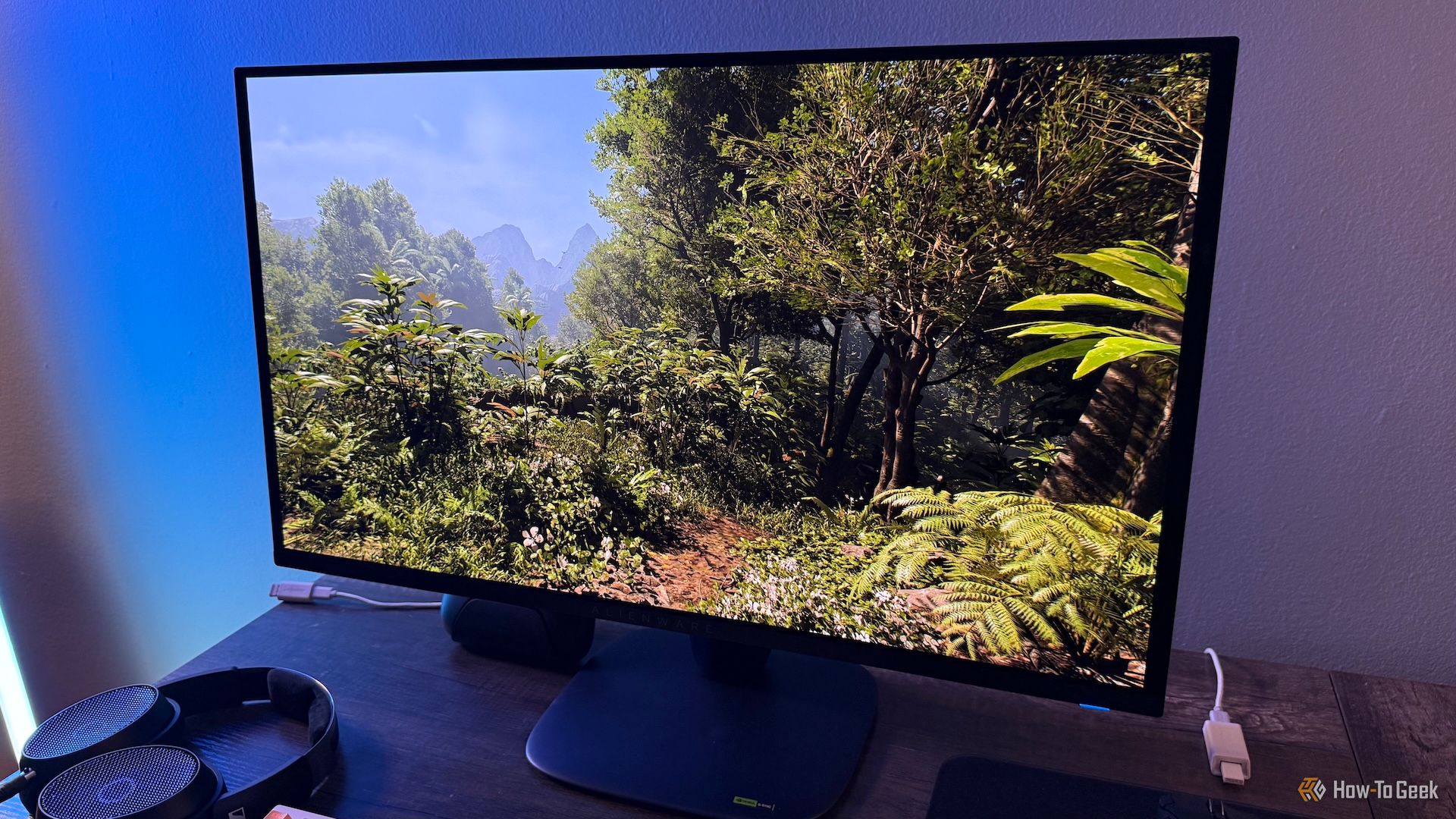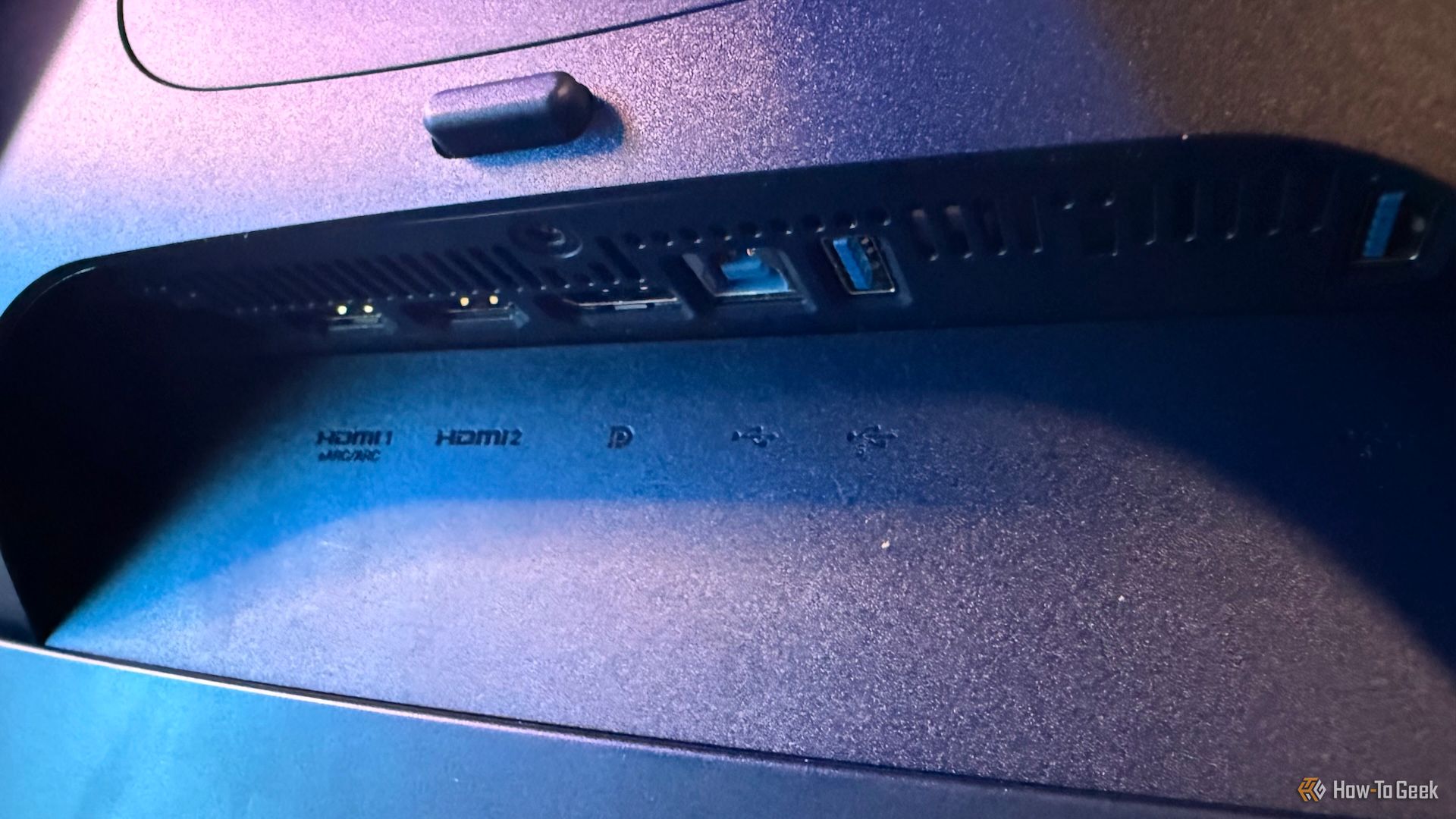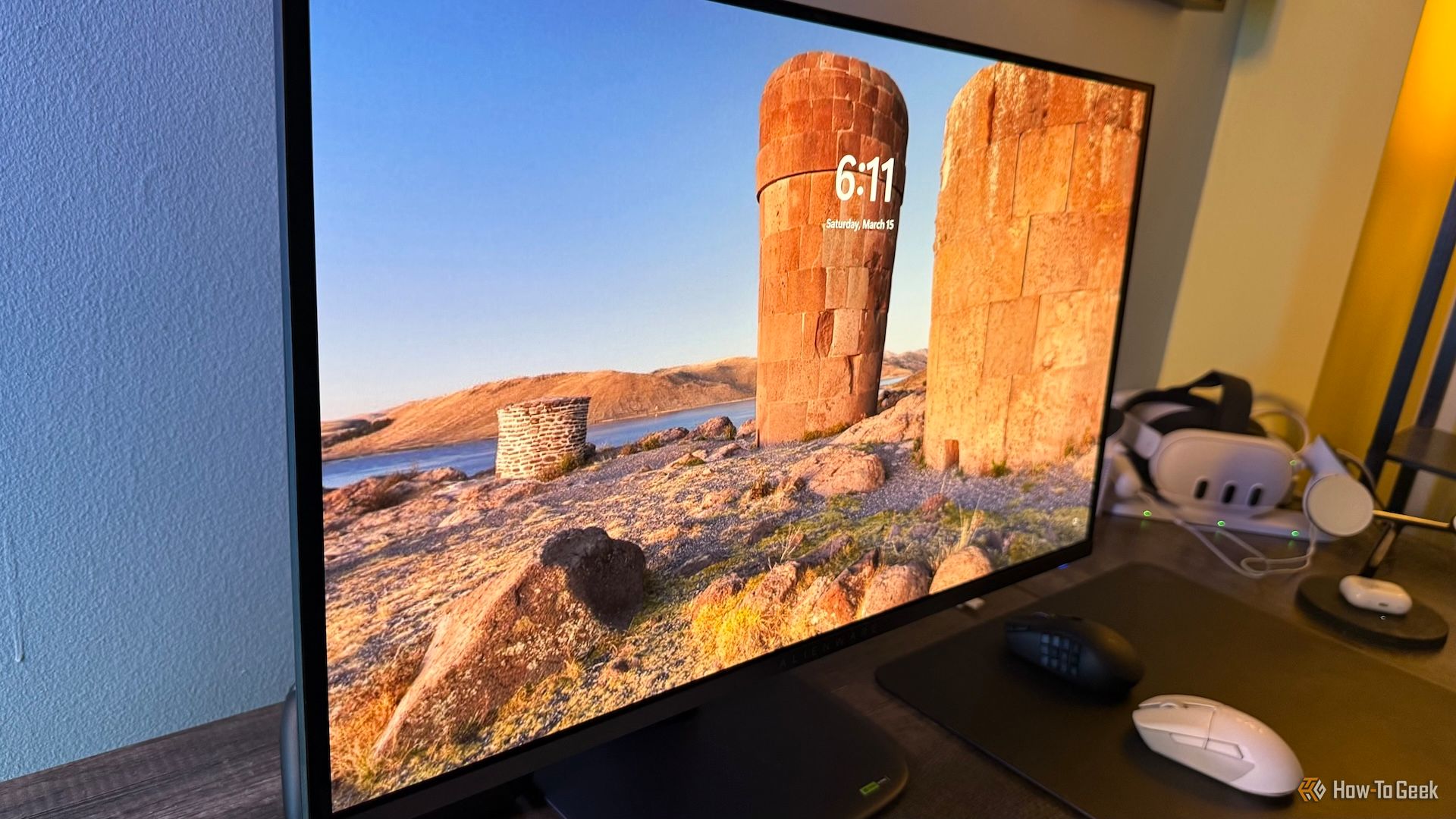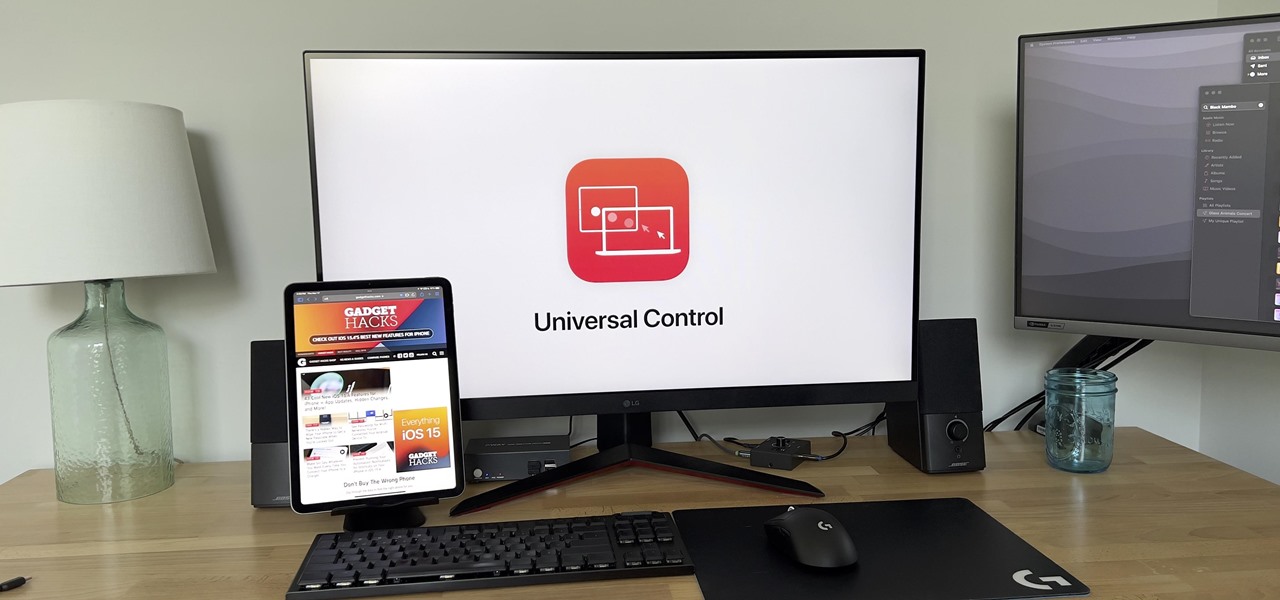I Can’t Pry My Eyes From Alienware’s New 4K QD-OLED Gaming Monitor
Summary
- This 27-inch Alienware 4K QD-OLED gaming monitor is pricey at $899.99 but provides a luxurious high pixel density.
- The new Alienware monitor’s design is sleek, space-efficient, easy to manipulate, and has a cool dark blue hue.
- The AW2725Q is highly performant for a 4K monitor at 240 Hz, but doesn’t have DisplayPort 2.1 to natively support it.
If $899.99 for a 27-inch monitor shocks your senses, don’t worry, I felt the same. However, I began singing a very different tune after using the Alienware 27 4K QD-OLED (AW2725Q) thanks to the boon its immense pixel density has on both gaming and general computing.
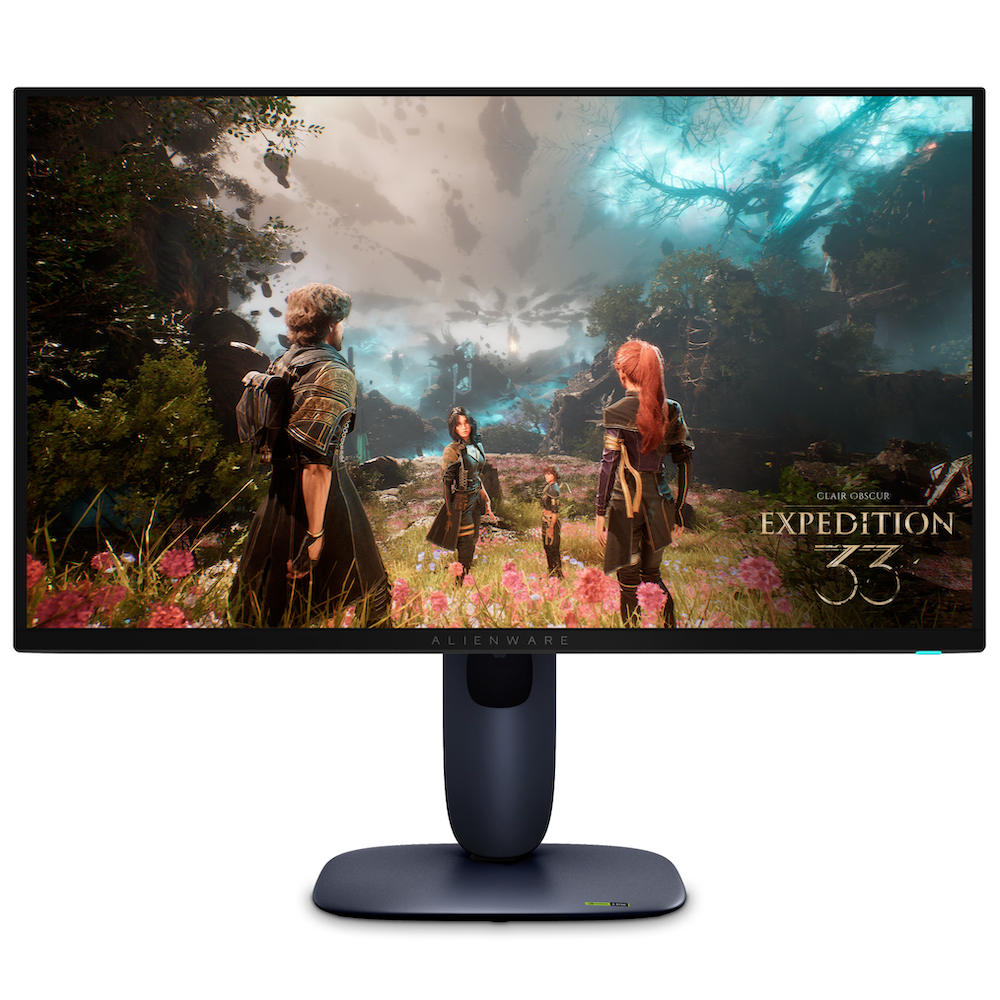
Alienware 27 4K QD-OLED (AW2725Q)
A 27-inch 4K gaming monitor with a QD-OLED screen and a pixel density of 166 PPI. It features HDR and Dolby Vision, supports NVIDIA G-Sync and AMD FreeSync, and uses AI to help reduce burn in.
- Stunning high pixel density
- Impressive 4K 240 Hz performance
- Space-efficient design
- Pretty dim
- No DisplayPort 2.1 support
- No black or white color options
$899.99 at Dell
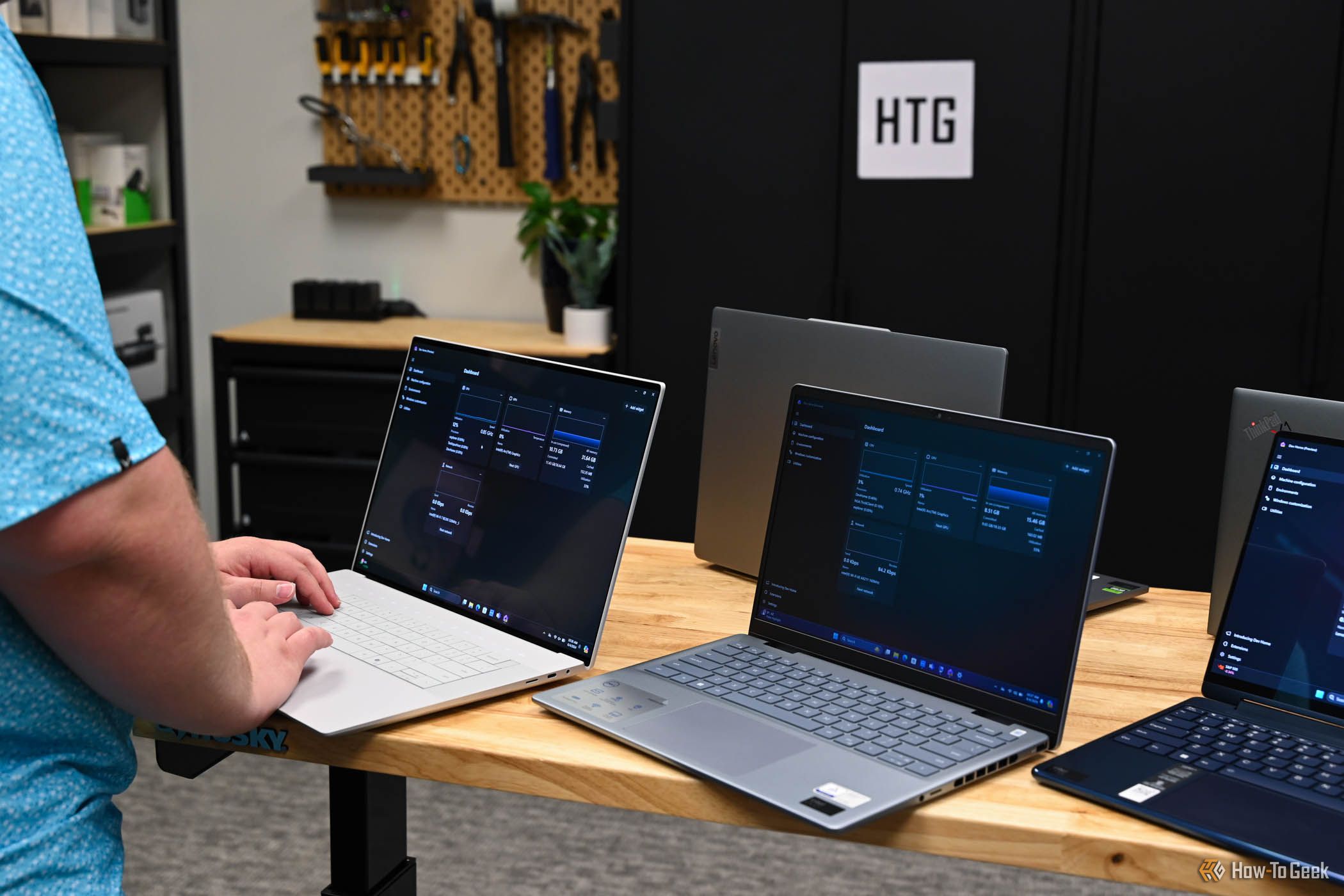
See Our Process
How We Test and Review Products at How-To Geek
We go hands-on with every product to ensure it’s worth your time and money.
Price and Availability
The Alienware 27 4K QD-OLED (AW2725Q) is a gaming monitor that retails for $899.99.
Included in the box are three six-foot connection cables: DisplayPort 1.4, HDMI 2.1, and USB-A to USB-B 5Gbps. There’s also a microfiber cloth and power cable.
A Fitting Form for a Flagship Monitor
Alienware is positioning the AW2725Q as its flagship monitor, and it’s easy to see why without even powering on the screen.
This desk piece is as gorgeous in its dusky blue casing as it is space-efficient. This latter point stands out compared to the company’s last-generation models, particularly the larger monitors with long protruding legs. The newly designed base now sits just behind the display, freeing up ever-valuable desk space. It’s also remarkably easy to maneuver the screen, including a largely seamless transition between landscape and portrait modes. I say “largely” because the corner of the monitor scrapes against the front edge of the base a little, but it’s nothing I’d be worried about unless you plan to flip it regularly.
It doesn’t hurt that setting up the AW2725Q couldn’t be easier. The base has a pre-installed thumb screw that twists into the arm with a few turns, and the arm has a magnetic hook-and-lock mechanism that securely slots into the screen (it’s released by a button). I had this on my desk and powered up within a few minutes of pulling it out of the box.
If there’s one criticism I’d levy on the other superb new design, it’s that people who like black or white color schemes don’t have that option here. I love the new color, but options are always welcome, especially for those who color-coordinate their gaming peripherals.
Jaw-Dropping Pixel Density Defines This 4K Display
27-inch 4K monitors are a new paradigm that most major brands are jumping on. I was skeptical of this move as it seemed like a needless cost increase for small displays, but after using one, I understood my folly was overlooking the impact of its 166 PPI pixel density.
This sharpness inherent to downsizing a screen of the same resolution makes a huge difference when your face is right up against it. In practice, the smaller 4K form factor does just this, offering unprecedented image definition that was hard to pry my eyes away from. Pixels practically disappear to an extent that will be a sea change not just for 27-inch monitor users upgrading to 4K and a notable improvement for 4K 32-inch and larger users.
This gave newfound clarity to small details in noisy in-games areas like foliage-laden forests and bustling cities, and to text while web browsing. I can see this latter aspect being an appealing prospect to potential purchasers that need a monitor for general productivity with a bit of gaming on the side.
This gorgeous image quality is aided by the QD-OLED panel. There’s nothing too exciting to discuss here, which isn’t a bad thing. You get the same perfect contrast and fast response times (.03 ms) that OLED and QD-OLED technologies have staked their name on. It all works in tandem to create a screen that’s about as good as you could get right now, at least in the 27-inch category.
This also means the flaws of any OLED panel are not only present but a bit more of a bugbear than usual. Namely, this display is pretty dim, with a max of 250 nits for SDR content and 1,000 nits for HDR and content. These are the same specs as the 1440p Alienware 34 Curved QD-OLED (AW3423DWF) I use from the previous generation of Alienware monitors. While it doesn’t impede my usage of either monitor, the vastness of the curved ultrawide form factor makes it easier to excuse, whereas the more intimate experience of a 27-inch monitor drives more attention to washed-out blacks under direct light exposure. Basically, if you own a (QD-)OLED panel, you know what to expect.
The full suite of HDR options and adjustment features are here, even if most users will set it to HDR Peak 1000 and forget it. I’m skeptical that it’s regularly hitting its 1,000 nits target, but I never minded too much since HDR and Dolby Vision on such a pixel-dense QD-OLED display is a treat regardless. That’s really my overall takeaway here: criticisms take a backseat to the laudable qualities of the AW2725Q’s visual feast.
Highly Performant, but the Ports Undersell It
The main reason to buy a gaming monitor is for high refresh rates, and the AW2725Q is no slouch in this department with its impressive capacity to output a 4K resolution at 240 Hz. This is currently the high end of refresh rates available at 4K; if you want anything higher, you’ll need to look at 1440p monitors.
You’ll need a high-end graphics card to get anywhere near 240 Hz on many games, but then again, you probably have one if you’re considering dropping a fat stack on a 4K monitor. With the requisite PC parts, everything works as intended here. Unfortunately, RTX 50 series owners won’t be able to reach that card’s native capability of 4K 240 Hz output via DisplayPort 2.1 because Alienware decided to stick with the older 1.4 standard.
Such a choice made sense in previous generations of monitors as RTX 40 series cards only support 1.4. Yet now that next-generation cards support DisplayPort 2.1, there’s no good reason not to support it on a high-end monitor. While I don’t personally notice the display stream compression used to reach these speeds with older formats, the type of tech-savvy person buying this monitor may very well have a keen eye for it. Even if this will be irrelevant to most people—especially if they’re using HDMI 2.1 (which also doesn’t support 4K 240 Hz)—it’s the type of omission that makes an otherwise forward-thinking product feel like it has one foot stuck in the past.
I also found myself plugging my MacBook Pro into the monitor via HDMI a few times and wishing I could just use an easier-to-manage Thunderbolt cable instead. That’s a pretty specific use-case that won’t even register on the radar of the target demographic for this monitor.
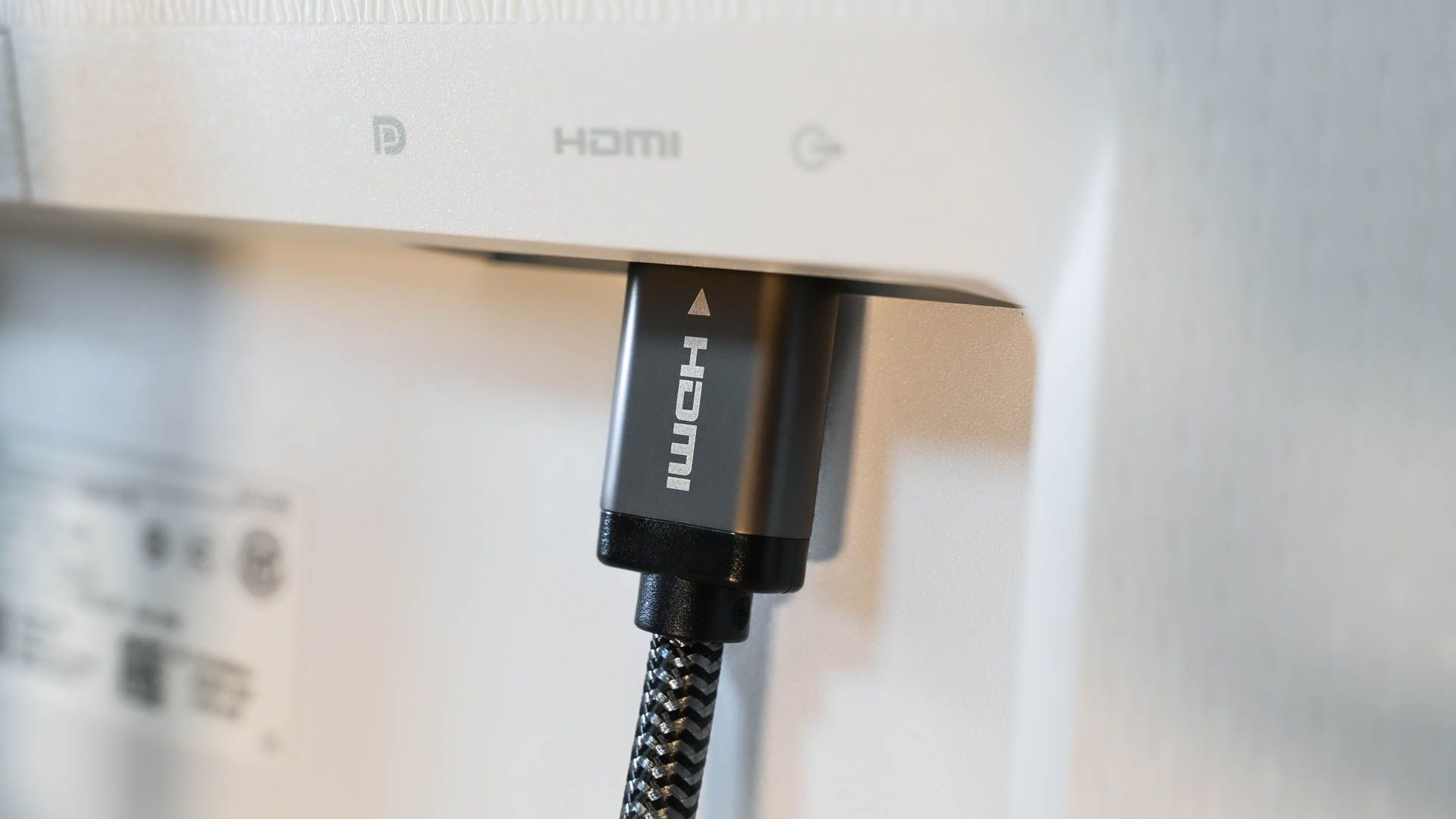
Related
Should You Use HDMI, DisplayPort, or USB-C for a 4K Monitor?
HDMI, DisplayPort, USB-C, and Thunderbolt are all common now, but which is best?
Should You Buy the Alienware 27 4K QD-OLED (AW2725Q)?
My critiques of the Alienware 27 4K QD-OLED (AW2725Q) are not insignificant—especially when it comes to brightness and the lack of DisplayPort 2.1—but it all fades away when you’re basking in the glorious pixel density afforded by a 27-inch 4K monitor. If you want the next best thing in smaller monitors and are willing pay a hefty price for it, the AW2725Q is an easy recommendation. I also think 32-inch monitor users who aren’t attached to the screen size should consider downsizing for a 4K image quality boost.
This is absolutely a luxury item, though. If you aren’t too discerning, then there are 1440p monitors for hundreds of dollars less that still look fantastic and may even provide superior refresh rates. Consider these instead. I also think anyone with a current gen graphics card that supports DisplayPort 2.1 and isn’t in immediate need of a new monitor should hold off until manufacturers more widely adopt the new standard.

Alienware 27 4K QD-OLED (AW2725Q)
A 27-inch 4K gaming monitor with a QD-OLED screen and a pixel density of 166 PPI. It features HDR and Dolby Vision, supports NVIDIA G-Sync and AMD FreeSync, and uses AI to help reduce burn in.
$899.99 at Dell











